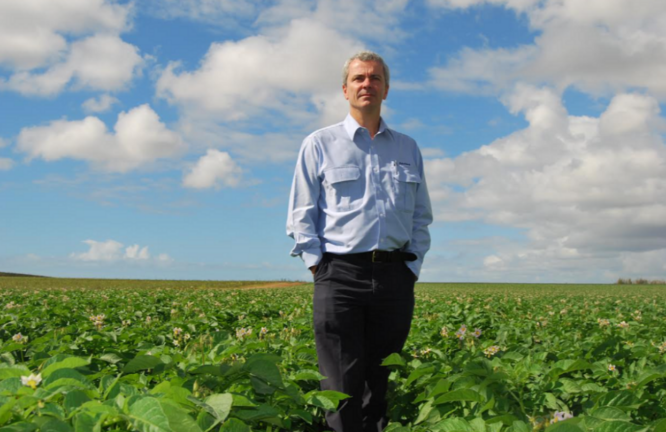The Purdue University/CME Group Ag Economy Barometer gained 6 points to 123 in April, improving farmer sentiment. In April, the barometer’s sub-indices rose 3 points to 129 and 7 points to 120. Monthly telephone surveys of 400 U.S. agriculture producers determine the Ag Economy Barometer. April 10-14 saw April’s survey.
“Producers held a more optimistic view of the agricultural economy in April,” said the barometer’s chief scientist, James Mintert, director of Purdue University’s Center for Commercial Agriculture. “A shift in farmers’ expectations regarding the Fed’s future interest rate policy could be a key reason.”
The Farm Financial Performance Index rose 7 points to 93 this month. Since the February barometer survey, farmers’ interest rate expectations have changed as U.S. commercial banks’ prime interest rate rose from 7.75% in January to 8% in late March.
In spite of rising interest rates, farmers’ outlook has improved.
In April, 34% of producers expected the U.S. prime interest rate to remain stable or drop over the next year, up from 25% in February. In February, 75% of manufacturers expected interest rates to rise; now, 66% do. However, the percentage of respondents who expect rates to rise between 1 and 2 percent in the next year dropped 6 points since February to 37%.
In April, the Farm Capital Investment Index rose one point to 43, although over 70% of respondents still think now is a bad time for significant investments. This month, 39% of respondents mentioned “rising equipment and construction costs” and 33% identified “rising interest rates” as the main reasons for not investing.
After five months of decrease, April producers’ short-term farmland value estimates rose. In April, the Short-Term Farmland Value Expectations Index gained 10 points to 123, while the long-term index remained at 142. Despite this month’s rise, the short-term index is still 21 points below a year ago and 36 points below two years ago.
This month’s study asked farmers about the farm bill. 12% of respondents believed a new farm bill will pass this year, 28% said somewhat probable, 16% said somewhat unlikely, and 13% said extremely unlikely.

Corn and soybean producers were also asked what was most important in a new farm bill. 40% of respondents prioritized crop insurance, 31% commodities programs, 13% conservation, 8% agricultural research and extension, and 8% renewable energy.
Purdue Center for Commercial Agriculture
Solar farmland leasing is popular. 15% of this month’s survey respondents had actively discussed leasing acreage for solar energy production with corporations in the preceding six months. Nearly half of producers reported discussing $1,000-per-acre lease rates. Twenty-five percent of respondents were offered a lease rate of $1,250 or more per acre after development and construction, while 22% were offered between $1,000 and $1,250. 32% received lease rates under $500 per acre.
AGECBARO, AGECCURC, and AGECFTEX are Bloomberg Terminal ticker symbols for the Ag Economy Barometer, Index of Current Conditions, and Index of Future Expectations.
The Center for Commercial Agriculture was formed in 2011 to educate and train farmers. The center’s faculty and staff create and implement research and teaching programs to meet today’s business management demands in Purdue University’s Department of Agricultural Economics.

